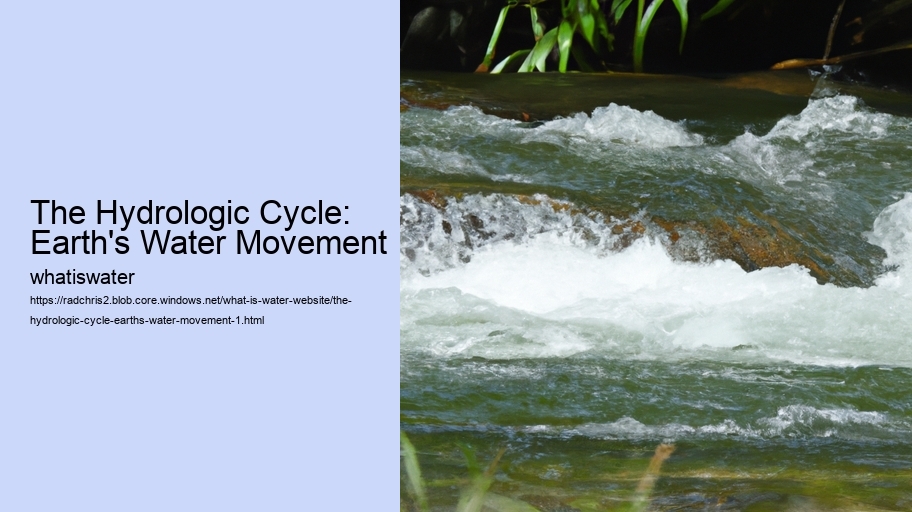The hydrologic cycle, often referred to as the water cycle, is a continuous global phenomenon through which Earth's water moves and transforms.
The Hydrologic Cycle: Earth's Water Movement - Water Pollution
- Wastewater Treatment
- Water Cycle
- Water Sports and Recreation
- Hydration and Health
The Hydrologic Cycle: Earth's Water Movement - Wastewater Treatment
- Drinking Water
- Water Rights
- Wastewater Treatment
- Water Cycle
- Water Sports and Recreation
- Hydration and Health
Once airborne, this vapor can travel great distances carried by wind currents before it cools and condenses into clouds.
The Hydrologic Cycle: Earth's Water Movement - Bottled Water
- Bottled Water
- Drinking Water
- Water Rights
- Wastewater Treatment
When these droplets combine and grow heavy enough, they fall back to Earth's surface as precipitation in various forms: rain, snow, sleet, or hail depending on atmospheric conditions. Precipitation replenishes freshwater resources on land including glaciers, groundwater aquifers, and surface waters like ponds.
Some of the precipitated water nourishes plants through a process named transpiration – when moisture travels from soil up through plant roots to leaves and eventually evaporates again into the atmosphere. Another portion percolates down through soil layers recharging underground reservoirs in what we call infiltration.
Rivers play a crucial role by channeling excess runoff towards larger bodies of water. Along the way, they sculpt landscapes forming valleys and deltas while supporting diverse ecosystems teeming with life both aquatic and terrestrial.
Human activities have increasingly impacted the hydrologic cycle altering patterns of precipitation and evaporation due to climate change caused by greenhouse gas emissions. It’s imperative that we understand this complex system if we wish to manage our precious water resources sustainably for future generations.
To summarize, from evaporation to precipitation then back again via processes like transpiration and infiltration—the hydrologic cycle is an intricate dance ensuring that no drop of precious H2O ever truly escapes Earth's choreography of conservation.
How to Discover the Connection Between Hydration and Longevity n Unlock The Secret!
